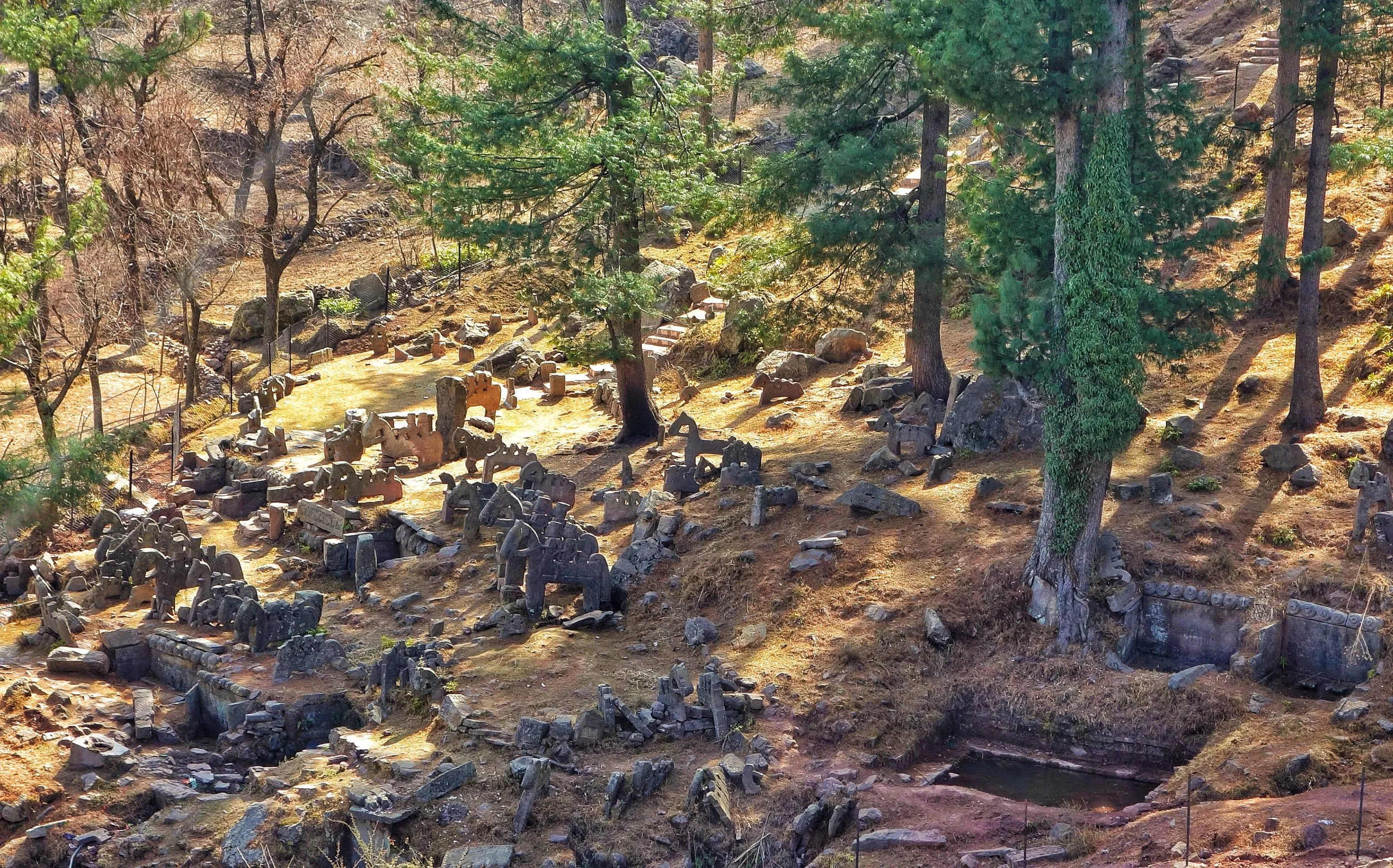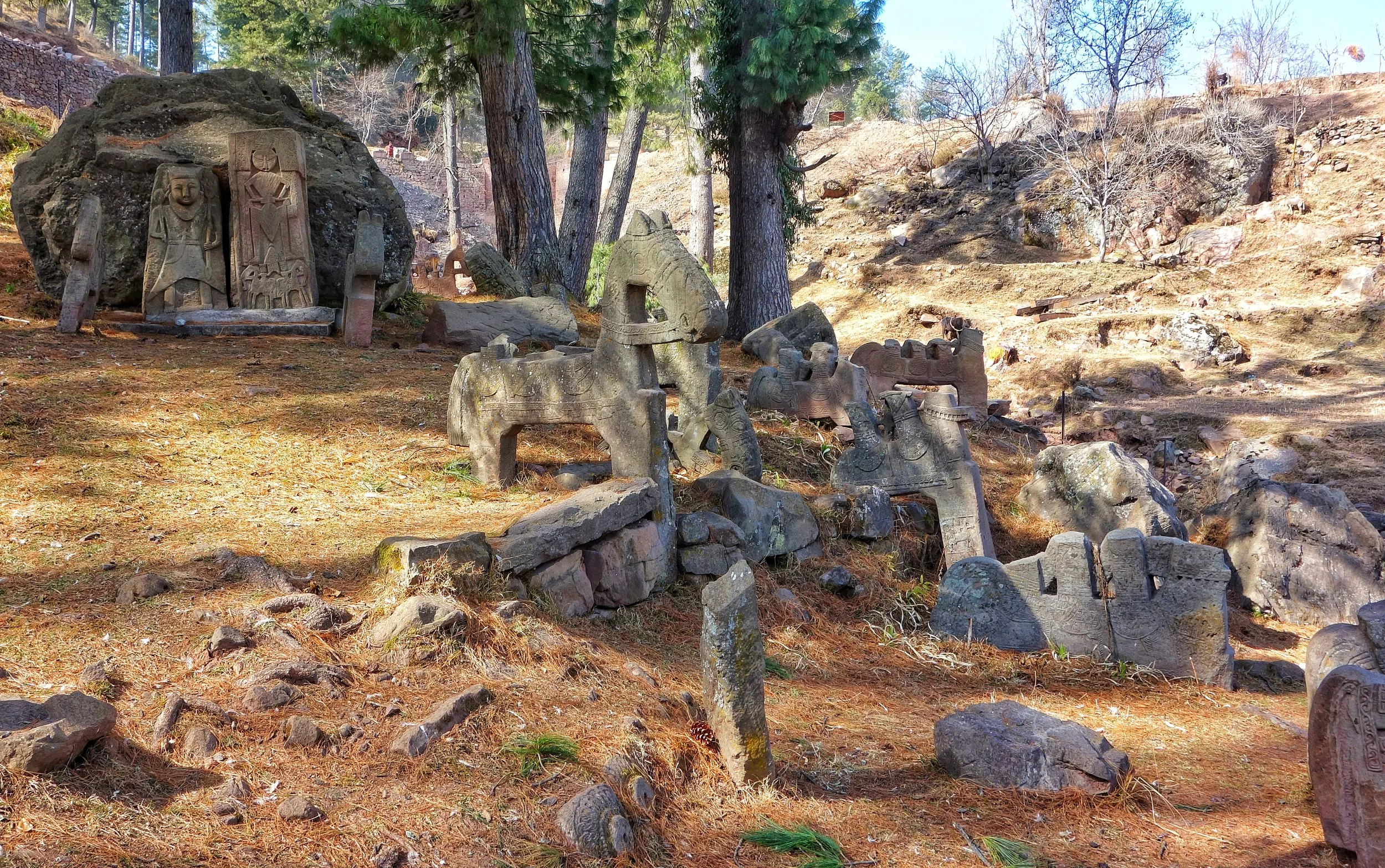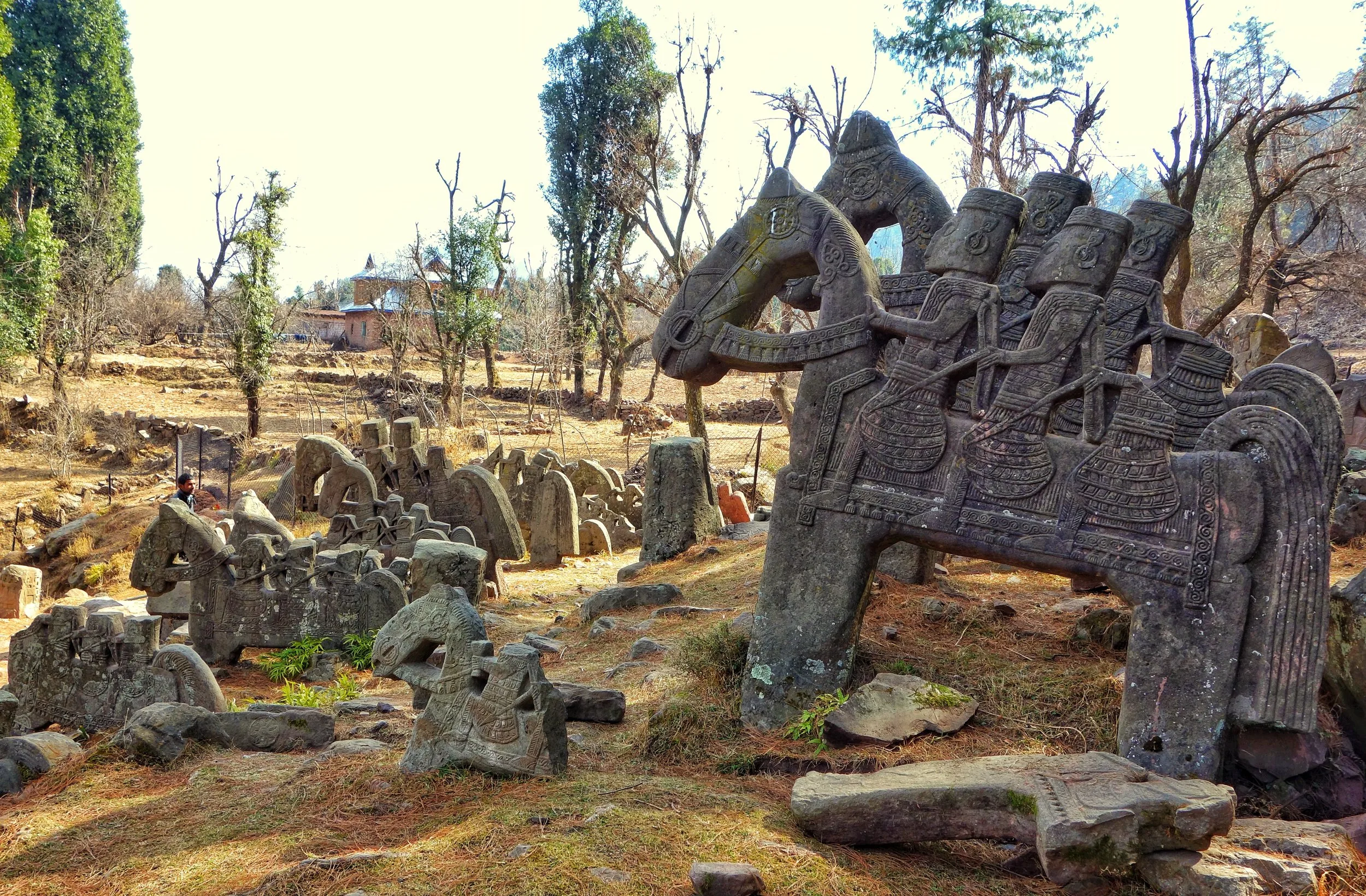Deep within the rugged contours of the Pir Panjal Range in Jammu and Kashmir lie dozens of enigmatic stone carvings collectively known as the Horsemen of the Pir Panjals. Their remarkable craftsmanship, foreign stylistic traits and strategic placement invite both scholarly intrigue and local reverence.
Location and Distribution
The sculptures are scattered across remote mountain passes—locally referred to as “Galis”. The principal concentration of these sculptures occurs in ‘ Ghora Gali’ near Gool village in Reasi district, yielding over two hundred horseman figures across some five acres of forested terrain.
Accessible only by an army-built track, this site lies adjacent to a natural spring and semi-frozen pond, features repeated at other locations. Additional clusters appear along the Sangaldan–Gool road in Ramban district, at Gadi Nalla and Nar in Tehsil Gool, and at Sildhar near Mahore. While the first is reachable by road, the remainder demand considerable ascent, rendering many sites all but forgotten.

Historical and Cultural Context
Local folklore attributes the sculptures to the Pandavas of the Mahabharata, who are said to have made them during their exile. More plausible, however, is a Central Asian genesis. One hypothesis links the sculptures to the White Huns’ incursions into the subcontinent during the fifth to seventh centuries AD. At the same time, another posits a shorter-term presence of Bactrian cavalry units stationed along ancient trade and pilgrimage routes through the Pir Panjals. The mixed Dogri, Gujri and Kashmiri populace at the Jammu-Kashmir frontier further attests to centuries of cultural interchange.
Archaeological opinion generally places the creation of these monuments in the early centuries AD, when Gandharan, Bactrian and Hellenistic art forms intermingled. The quality of the stone carving is smooth polish, with precise detailing of musculature and drapery, which demonstrates a highly developed atelier tradition, whether imported or local.
Scholars have often debated the original function of the Horsemen. Given their siting beside natural springs and along trans-mountain routes, some suggest they served as navigational markers or rest-stop memorials for travellers and their mounts. Others propose religious or commemorative roles, possibly honouring fallen warriors or deities associated with horses. The predominance of martial imagery as opposed to overt Hindu iconography supports a theory of secular, perhaps even mercenary, commemoration.
Artistic Characteristics and Chronology
All extant sculptures date from the second to third centuries AD, a period coinciding with the ascendancy of the Gandhara school of art. Yet their iconography and ornamentation betray a marked foreign influence. The horsemen are uniformly armed, each wielding weapons akin to those borne by the Hephthalite (White Hun) cavalry, and are depicted wearing large round earrings.
Facial traits such as high cheekbones, long straight noses, and almond-shaped eyes mirror those on contemporaneous Hephthalite coinage, suggesting either direct patronage or the assimilation of Central Asian aesthetic conventions.
Notably, nearly every horse carries two or three riders, an unusual detail implying exceptional equine strength or a symbolic representation of military prowess. Scattered among the horseman reliefs are occasional depictions of local deities (devtas) and geometric motifs, though these are decidedly fewer and stylistically distinct from mainstream Indic sculptural traditions.

Conservation Status and Future Prospects
Despite their significance, these sites remain largely neglected. No official Archaeological Survey of India signage or protective measures exist at most locations, although the State Directorate of Archives, Archaeology and Museums declared the Ghora Gali group a protected site in 1986. Three sculptures reside in Srinagar’s Shri Pratap Singh Museum, where experts have noted their Bactrian-Greek affinities but lament the paucity of systematic study.
Unfenced and exposed to harsh winters and summer rains, many carvings have toppled or fractured. Recent proposals by the Tourism Department to promote Ghora Gali as part of a local heritage circuit alongside attractions such as the Tatapani hot springs offer some hope. Greater visitor interest could galvanise archaeological excavation, conservation efforts and scholarly research, finally yielding definitive insights into the origins and purpose of these remarkable Horsemen.
